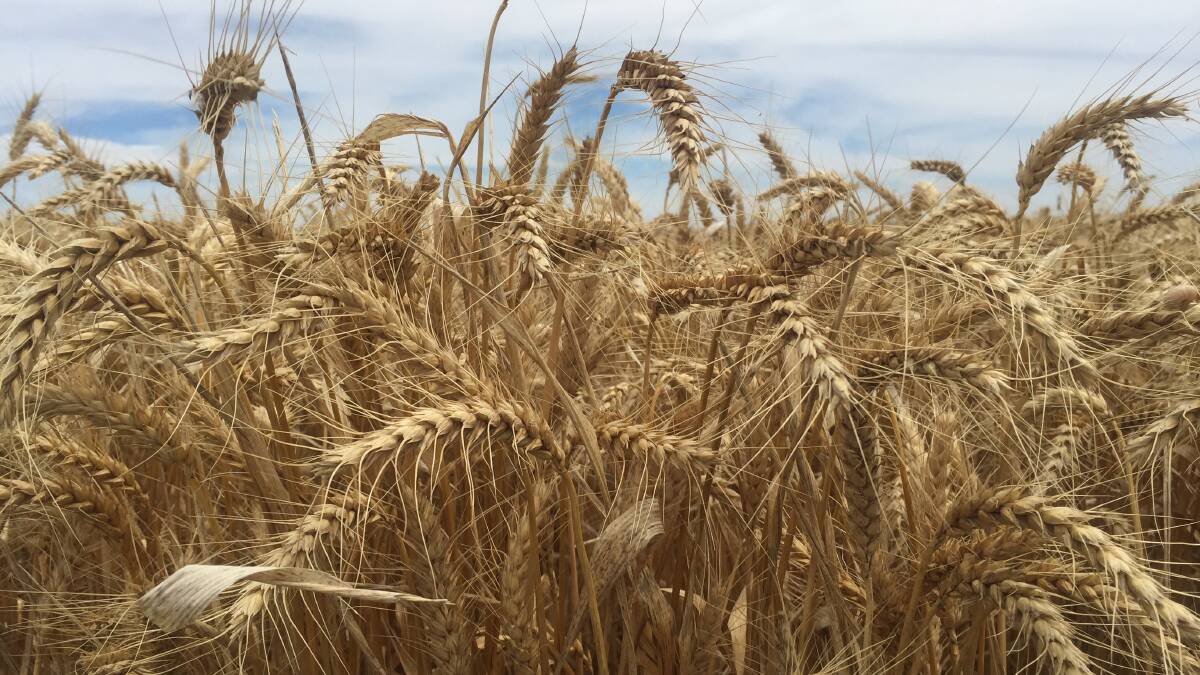
This season's winter crop harvest in Argentina is progressing well amid a dry weather forecast for most of the next two weeks and extremely positive harvest reports.
Yields in the north were well below average.
But as the harvest has moved south, yields have improved to such an extent that wheat output looks set to smash the previous production annual record.
Heavy rains last week delayed the wheat harvest in some regions.
But, according to the Buenos Aires Grain Exchange (BAGE), as of December 15, farmers had reaped 65 per cent of the 6.6 million hectares planted to wheat this year.
This was an 11.6 percentage point advance on the previous week, but still sits 1.4 percentage points behind the same time last year.
The BAGE wheat ratings took a spectacular jump last week to 81pc good-to-excellent, up from 67pc a week earlier.
This was on the back of yields approaching historical highs in the country's central cropping regions.
The average wheat yield harvest-to-date sits at 31.4 quintals per hectare (qq/ha), or 3.14 tonnes per hectare.
But output exceeding 45qq/ha (4.5t/ha) in recent weeks suggest an upward revision of BAGE's 21 million tonne wheat production forecast is imminent.
The Rosario Grain Exchange has already increased its wheat production forecast, moving up 1.4 million tonnes to a record 22.1 million tonnes earlier in the month.
This is up 30pc from the 17 million tonnes harvested in 2020-21.
The current US Department of Agriculture (USDA) wheat production forecast for Argentina is 20 million tonnes, which surprisingly remained unchanged in the World Agricultural Supply and Demand Estimates (WASDE) released on December 9.
On the barley front, harvest has been delayed by persistent rains, and progress sits 18 percentage points behind the same week in 2020.
Similar to wheat, yields have surprised to the upside once the harvest moved out of the drought-ravaged northern cropping areas.
While the average yield is expected to be lower than last year, a higher planted area has led to BAGE forecasting a 4.6 million tonne barley crop, with a strong upward bias.
Argentina's huge summer crop planting program is well advanced.
According to last Thursday's BAGE crop update, 47.7pc of the intended corn area has been planted up to December 15, against 55pc in the same week last year.
The corn crop is generally planted in two phases, with a break in November so the crop avoids flowering in the peak of summer.
About 64pc of the early crop was planted before the break.
But only 32.9pc of the late crop had been planted by mid-December, which was well behind last year's pace of 47pc.
The delayed planting raises production concerns, as it places greater emphasis on rainfall in the January to March period in a season where La Nina is building.
There is concern that the summer rains may not return until mid to late March, which would be disastrous for production and export income for the world's second-biggest corn exporter.
That said, BAGE only lowered the corn ratings by 2 percentage points to 83 per cent good-to-excellent and left its production estimate unchanged at a record 57 million tonnes from 7.3 million hectares.
The current USDA forecast is 54.5 million tonnes.
Planting of the soybean crop is progressing well, with 64.7pc completed up to Wednesday of last week. But it still lags behind last year's pace of 67.8pc.
The crop is rated 87pc good-to-excellent, which was up from 75 per cent a week earlier and close to double the 48pc rating in the same week last year.
At this point in the season, 90pc of the crop has an optimal soil moisture profile, down 2 percentage points week-on-week, but significantly better than the 65pc recorded on December 15 last year.
While the soybean crop is more advanced than corn, its sensitivity to a prolonged La Nina event is just as significant.
BAGE may have left its production estimate unchanged in last week's update, at 44 million tonnes, but the downside risk is growing with every week of planting delays and below-average rainfall.
The latest USDA production forecast is 49.5 million tonnes.
Meanwhile, on Friday of last week, the Argentine government announced a cap on the volume of corn and wheat exports in the 2021-22 export year in a fresh bid by the Peronist government to head off domestic grain shortages and quell extremely high food inflation.
At this early stage, corn exports will be limited to 41.6 million tonnes and wheat exports will be restricted to 12.5 million tonnes.
But these numbers seem quite conservative, considering a record wheat crop is currently being harvested, and a record corn crop is in the making - La Nina permitting.
Last season's registered exports were 39.8 million tonnes and 11.2 million tonnes for corn and wheat, respectively, from national production of 52.5 million tonnes and 17 million tonnes.
As of December 15, grain exporters had registered 15.5 million tonnes of corn and 9.1 million tonnes of wheat for shipment in the 2021-22 marketing year.
The agricultural sector is the engine room of Argentina's economy and is the key source of badly needed foreign exchange reserves, especially United States Dollars.
Last week's statement by President Alberto Fernndez comes just one week after the government announced the relaxation of extremely controversial limits on beef exports, imposed earlier in 2021.
This latest measure will certainly not be welcomed and adds to the tense relationship Argentine farmers share with the Fernandez administration since being elected in late 2019.
While government intervention in grain and beef markets is common in Argentina, and may work in the short-term, history shows that such restrictions imposed over a longer period tend to discourage production, leading to domestic supply shortages and higher prices for agricultural produce.

